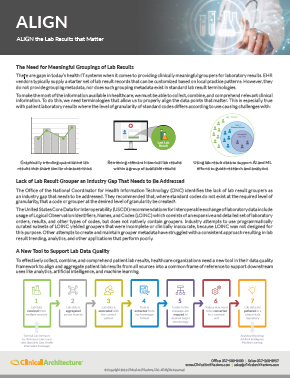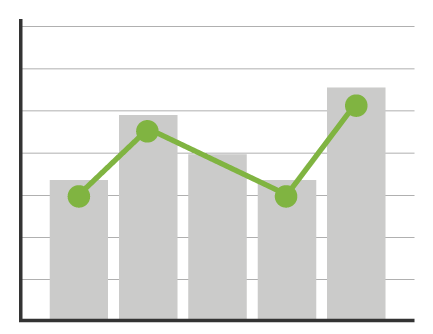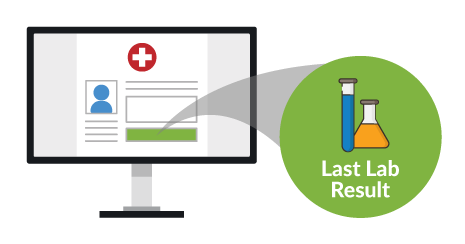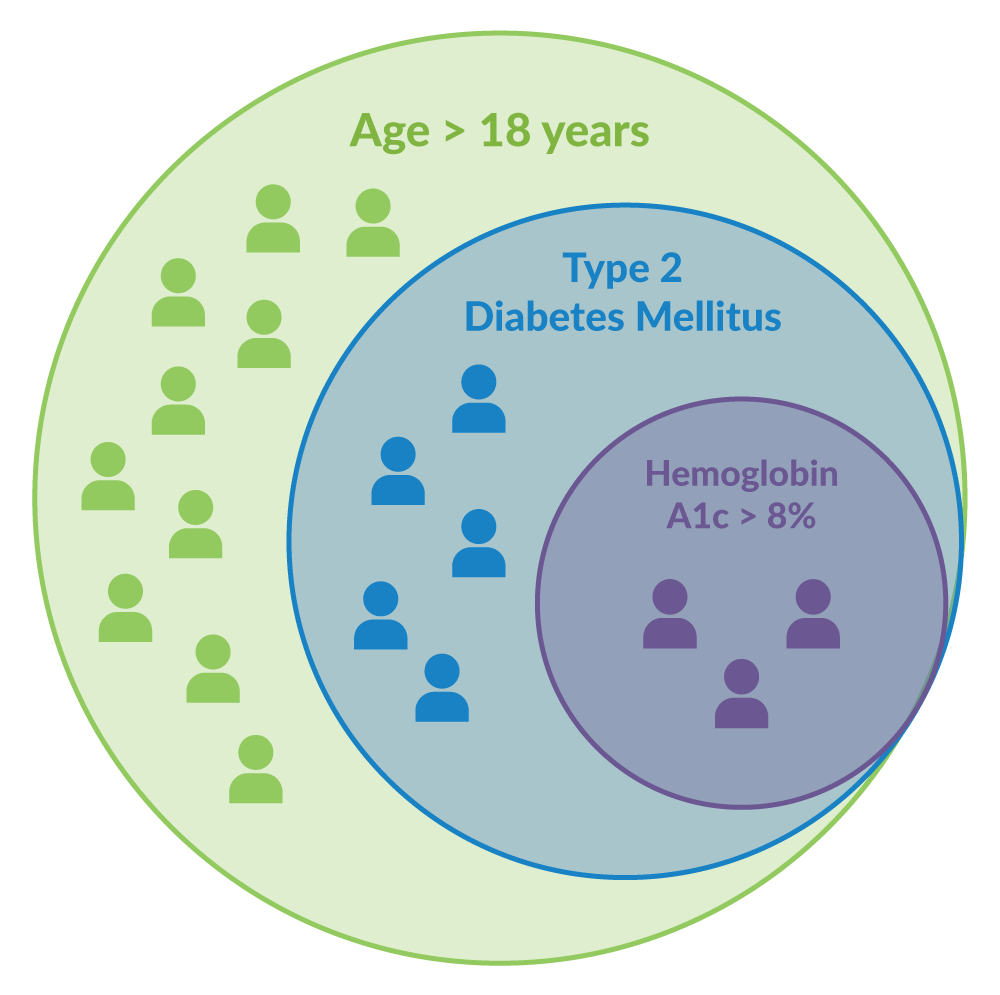ALIGN
ALIGN the Lab Results that Matter.
To make the most of the information available in healthcare, we must be able to collect, combine, and comprehend relevant clinical information. To do this, we need terminologies that allow us to properly align the data points that matter.

Download the Data Sheet
The Need for Meaningful Groupings of Lab Results
存在差距在当今的IT系统当我健康t comes to providing clinically meaningful groupers for laboratory results. EHR vendors typically supply a starter set of lab result records that can be customized based on local practice patterns. However, they do not provide grouping metadata, nor does such grouping metadata exist in standard lab result terminologies.
To make the most of the information available in healthcare, we must be able to collect, combine, and comprehend relevant clinical information. To do this, we need terminologies that allow us to properly align the data points that matter. This is especially true with patient laboratory results where the level of granularity of standard codes differs according to use causing challenges with:
Lack of Lab Result Grouper an Industry Gap That Needs to Be Addressed
The Office of the National Coordinator for Health Information Technology (ONC) identifies the lack of lab result groupers as an industry gap that needs to be addressed. They recommended that, where standard codes do not exist at the required level of granularity, that a code or grouper at the desired level of granularity be created1.
The United States Core Data for Interoperability (USCDI) recommendations for interoperable exchange of laboratory data include usage of Logical Observation Identifiers, Names, and Codes (LOINC) which consists of an expansive and detailed set of laboratory orders, results, and other types of codes, but does not natively contain groupers. Industry attempts to use programmatically curated subsets of LOINC yielded groupers that were incomplete or clinically inaccurate, because LOINC was not designed for this purpose. Other attempts to create and maintain grouper metadata have struggled with a consistent approach resulting in lab result trending, analytics, and other applications that perform poorly.
A New Tool to Support Lab Data Quality
To effectively collect, combine, and comprehend patient lab results, healthcare organizations need a new tool in their data quality framework to align and aggregate patient lab results from all sources into a common frame of reference to support downstream uses like analytics, artificial intelligence, and machine learning.
ALIGN – The Missing Clinical Roll-Up Concept for Lab Tests That Fills The Industry Gap
The Aggregated Lab Information Grouping Nomenclature (ALIGN) is a methods-driven, clinically curated lab grouping normative ontology that supports and simplifies analytical use cases for organizations that need to aggregate and derive insights from laboratory data from a variety of sources. ALIGN allows healthcare organizations to add clinically relevant grouping metadata to their lab result records to facilitate graphical trending, analytics, data exchange, note authoring, and other health IT system-dependent use cases.
Using ALIGN eliminates the need to self-develop grouping metadata. When used across a group of organizations, each organization benefits from the network effect of using the same set of lab grouping metadata to improve cross-facility research, analytics, and health information exchange.
Features of ALIGN:
Facilitates clinically appropriate alignment of lab result data from multiple sources
Provides meta-data to normalize result values for compatible units of measure
Establishes groupers that enable organized access and display of similar lab analytes
Addresses ~99% of lab results based on typical health system transaction volumes
Serves as a mapping target for local lab result source terms
Supports alternate display names
“There are several issues with regard to the granularity of standard [lab] codes. In some cases, they may be too specific for certain uses. In other cases, the available LOINC codes, or the ones selected/assigned to a test, may be insufficiently granular. Moreover, the level of granularity that is appropriate may differ according to use.”1
Want to learn more?
ALIGN is not intended to be a replacement for LOINC. Rather, it was designed with LOINC in mind and can be used to supercharge LOINC by streamlining it for aggregation, mapping, value normalization and clinical analytics. ALIGN content is updated every six months and follows scheduled releases of LOINC in March and September.
1Office of the National Coordinator for Health Information Technology. Priority Uses of Health Information Technology: Recommended Standards & Implementation Specifications.https://www.healthit.gov/sites/default/files/facas/2019-10-16_ISP_TF_Draft_Final_Report_508.pdf.
We'd love to hear from you.
Office:317.580.8400
Sales:317.268.8957






